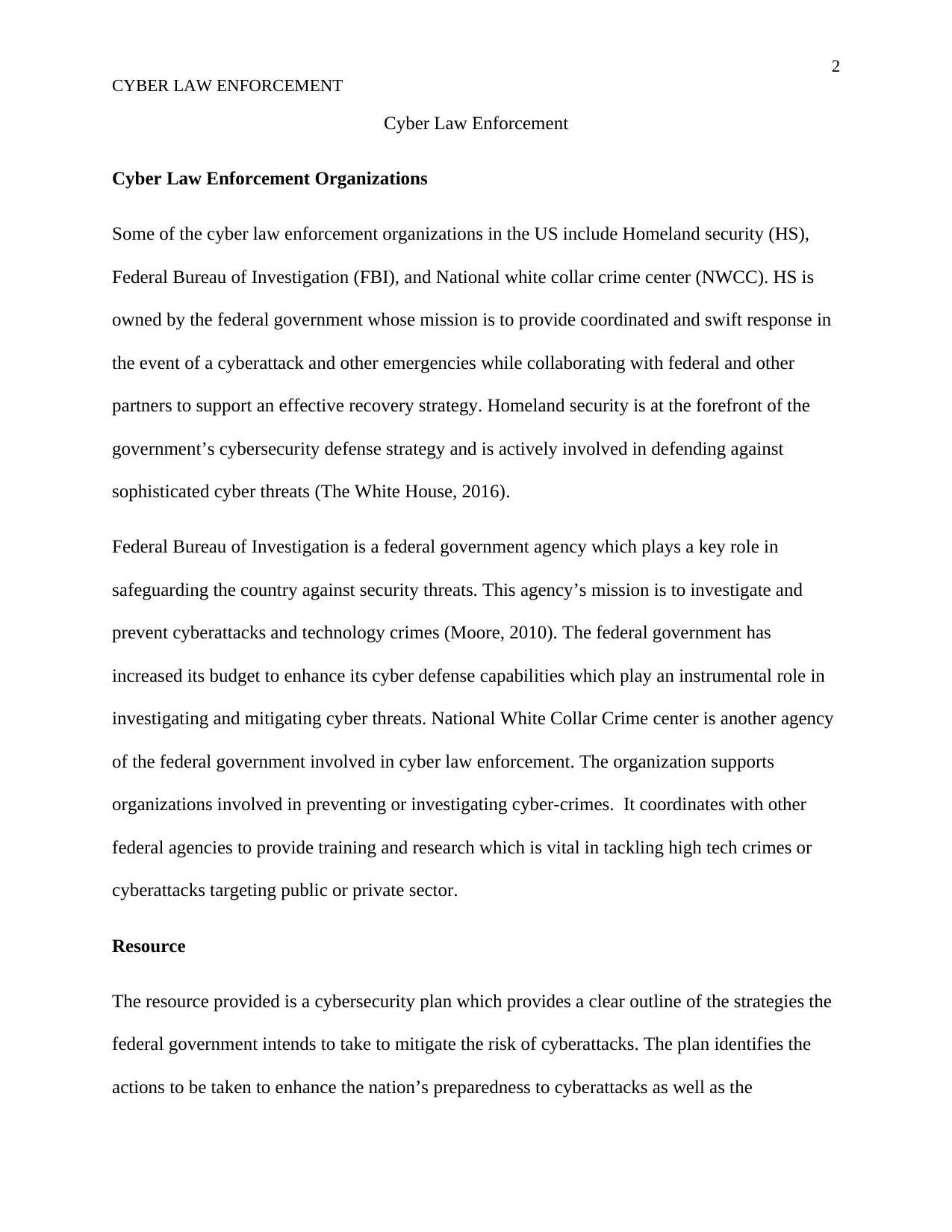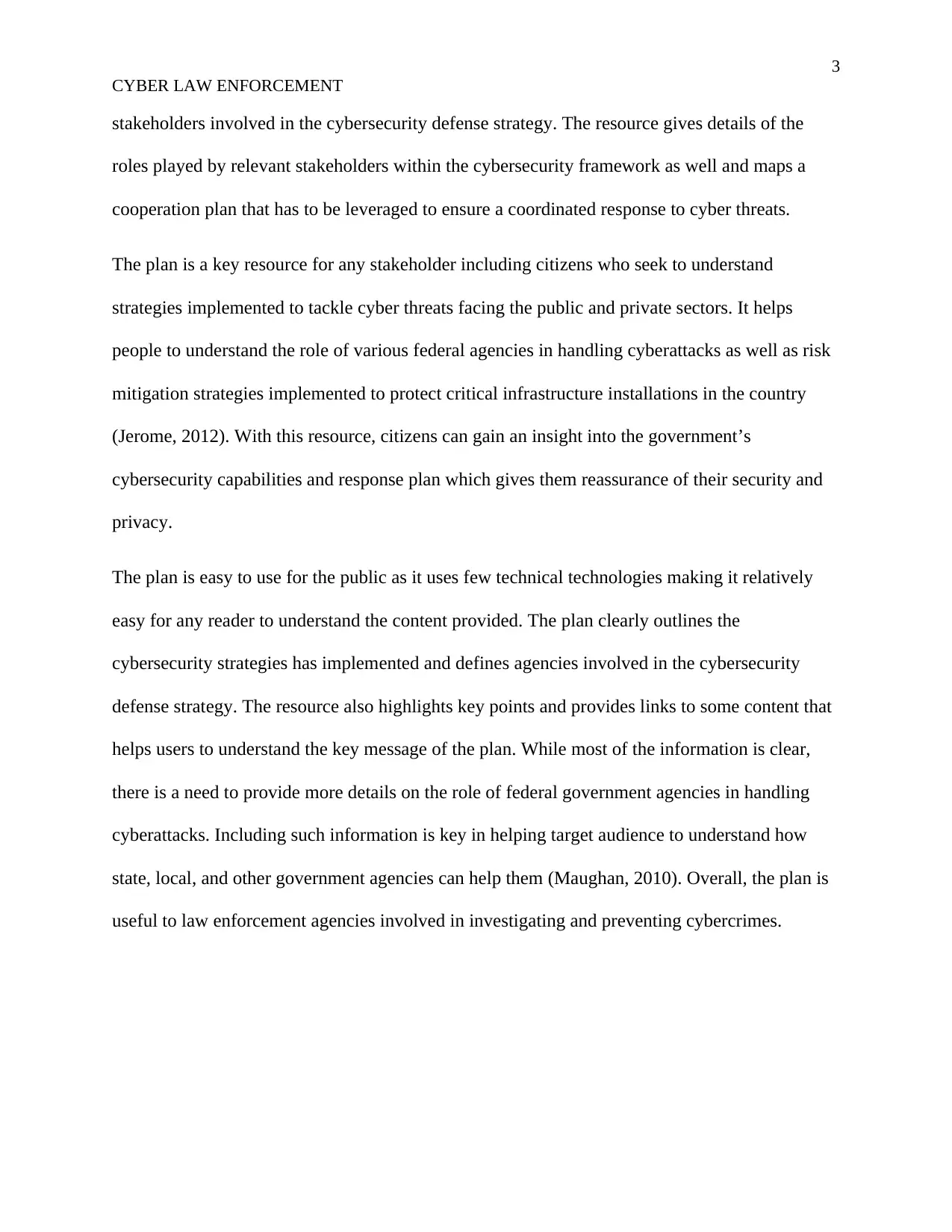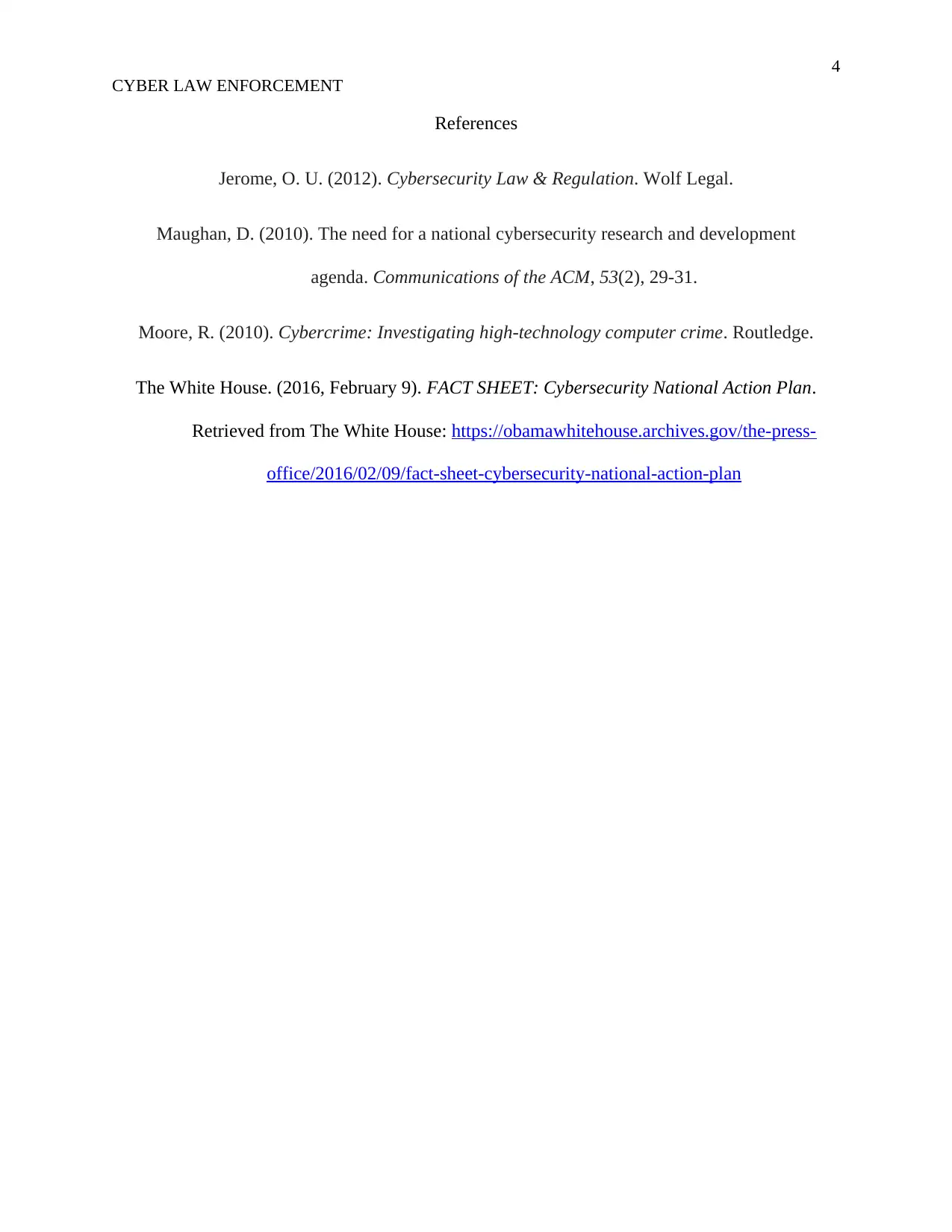Cyber Law Enforcement: US Organizations, Resources, and Strategies
VerifiedAdded on 2020/02/24
|4
|677
|424
Report
AI Summary
This report examines cyber law enforcement in the United States, focusing on the roles of key organizations such as Homeland Security, the Federal Bureau of Investigation (FBI), and the National White Collar Crime Center (NWCC). It highlights their missions in preventing and investigating cyberattacks and technology crimes, as well as the increased governmental investment in cybersecurity defense. The report analyzes a provided cybersecurity plan, outlining the strategies the federal government employs to mitigate cyber risks, including preparedness measures and stakeholder roles. The plan serves as a resource for understanding the government's approach to cyber threats, risk mitigation, and the roles of various federal agencies. The report also suggests improvements, such as providing more details on how state and local agencies can assist citizens. Overall, the report offers insights into the strategies and organizations involved in defending against cyber threats.
1 out of 4











![[object Object]](/_next/static/media/star-bottom.7253800d.svg)